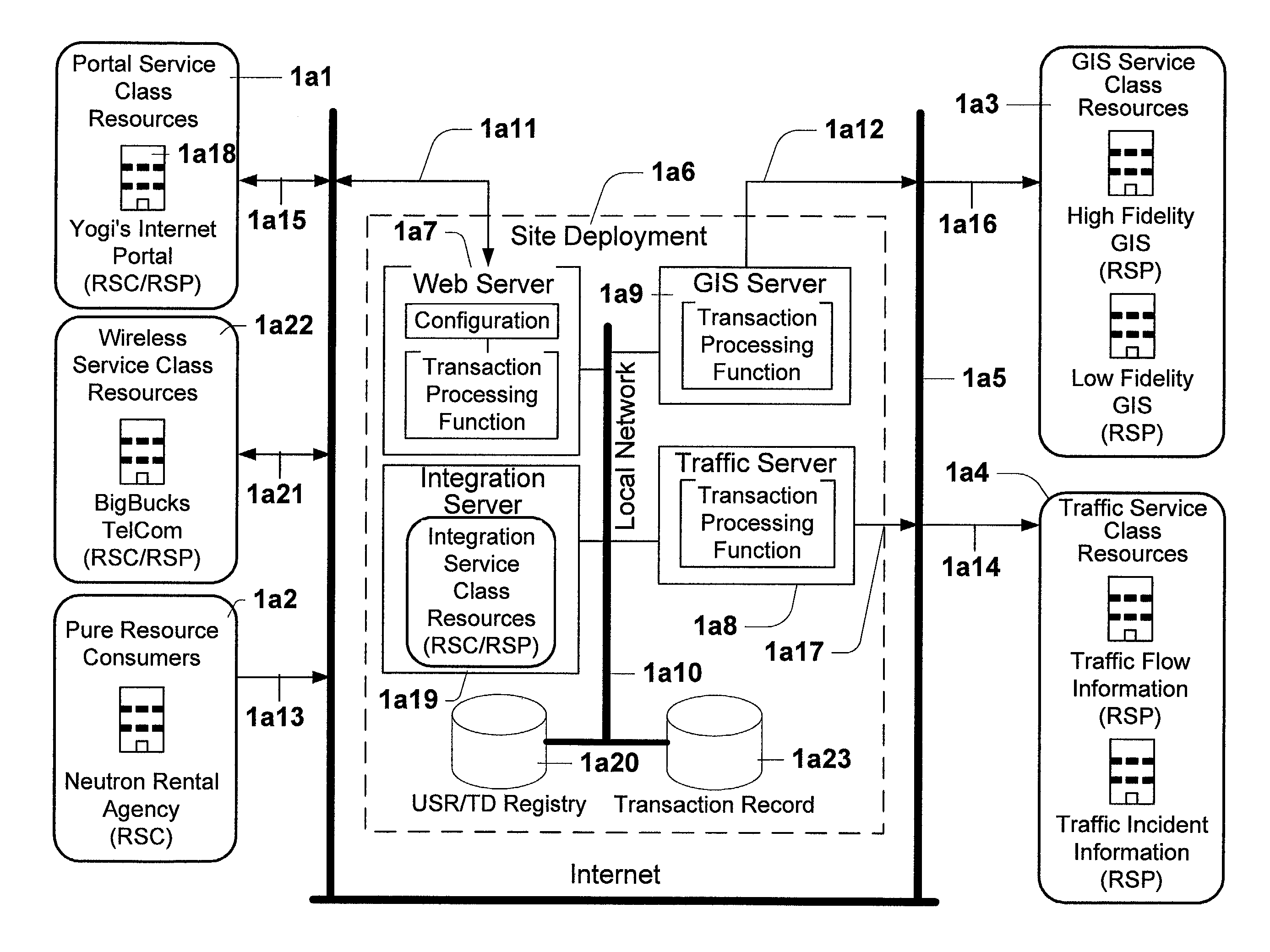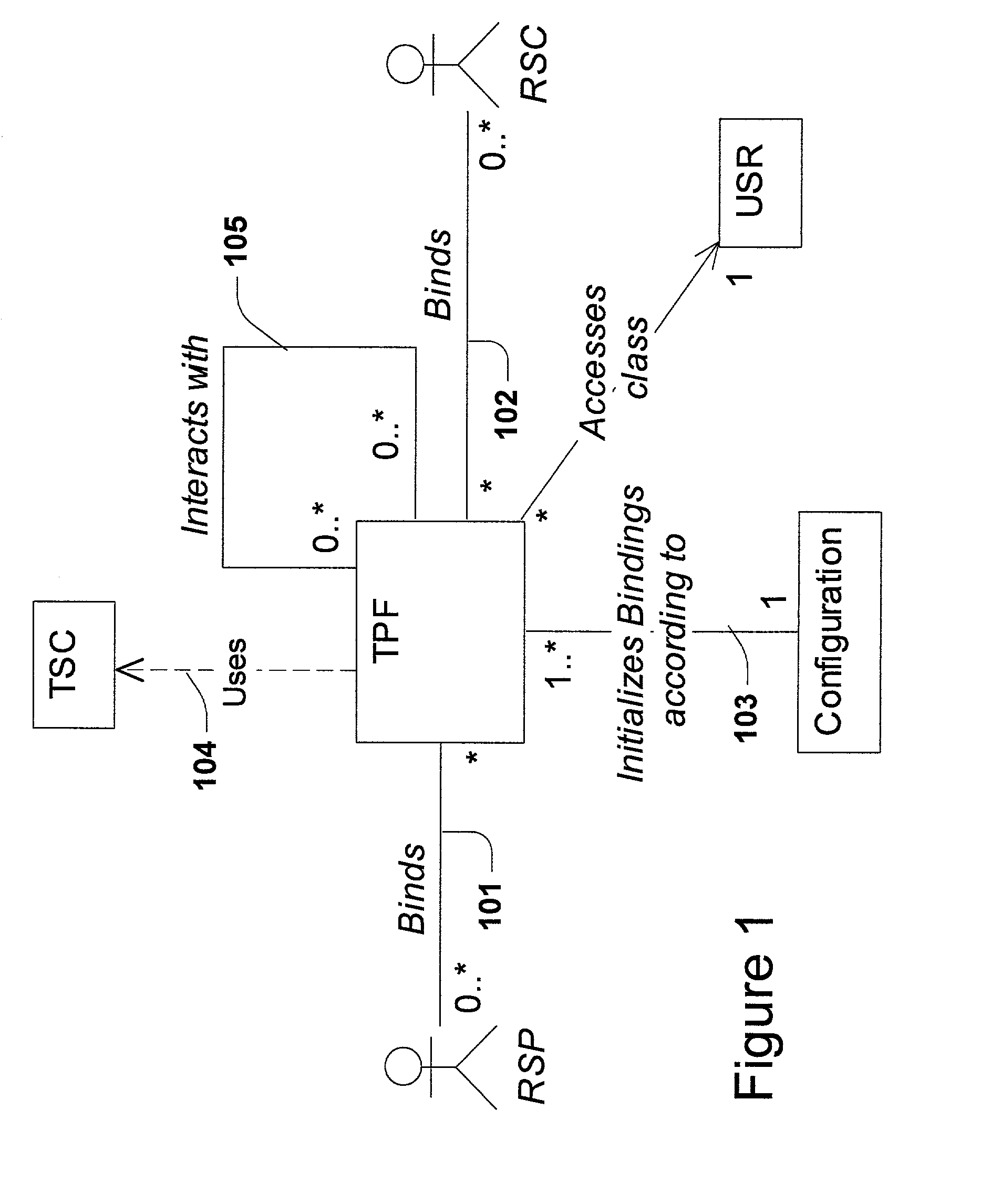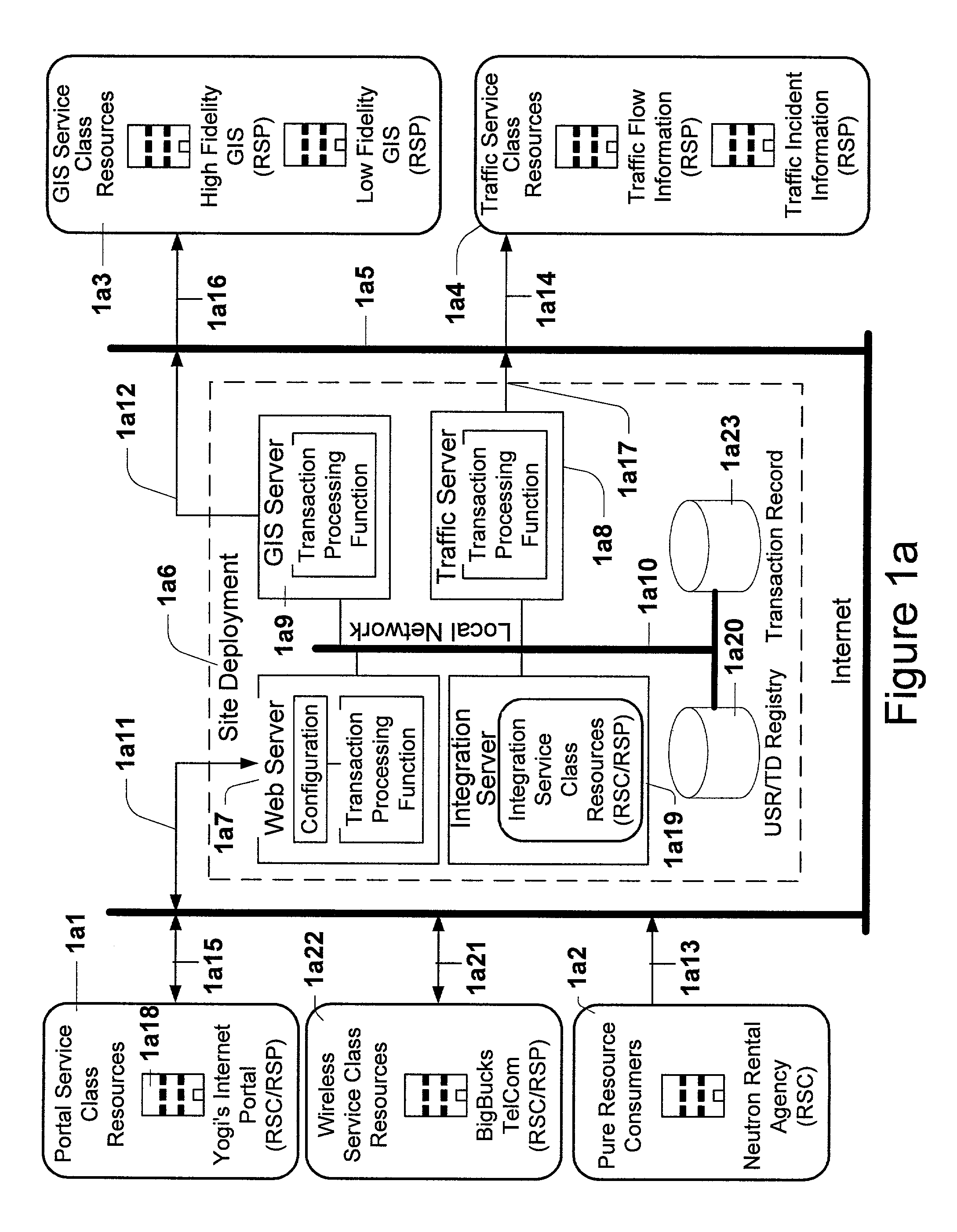Method and system for generalized and adaptive transaction processing between uniform information services and applications
a technology of information services and applications, applied in the field of transaction processing, can solve the problems of limited value of approach, little has been done to improve information access and integration, and provide a comprehensive means to simply access the right information, and achieve the effect of convenient reus
- Summary
- Abstract
- Description
- Claims
- Application Information
AI Technical Summary
Benefits of technology
Problems solved by technology
Method used
Image
Examples
Embodiment Construction
[0059]The present invention provides for information transaction processing between multiple service providers and consumers without explicit coupling between providers and consumers prior to execution of the transaction. According to the present invention, the interaction between information and service providers and consumers is managed by one or more transaction processing functions (TPF) so that access to services and information by consumers is controlled. Access to and coordinated delivery of information and services can be managed in a standardized and uniform manner such that the same set of TPFs can simultaneously support multiple types of information and service transactions.
[0060]In the present invention, networked services providing or consuming information are classified according to a uniform service model (USM), where the service and information they provide can be quantitatively described as to function, type of information, access model using a standardized taxonomi...
PUM
 Login to View More
Login to View More Abstract
Description
Claims
Application Information
 Login to View More
Login to View More - R&D
- Intellectual Property
- Life Sciences
- Materials
- Tech Scout
- Unparalleled Data Quality
- Higher Quality Content
- 60% Fewer Hallucinations
Browse by: Latest US Patents, China's latest patents, Technical Efficacy Thesaurus, Application Domain, Technology Topic, Popular Technical Reports.
© 2025 PatSnap. All rights reserved.Legal|Privacy policy|Modern Slavery Act Transparency Statement|Sitemap|About US| Contact US: help@patsnap.com



